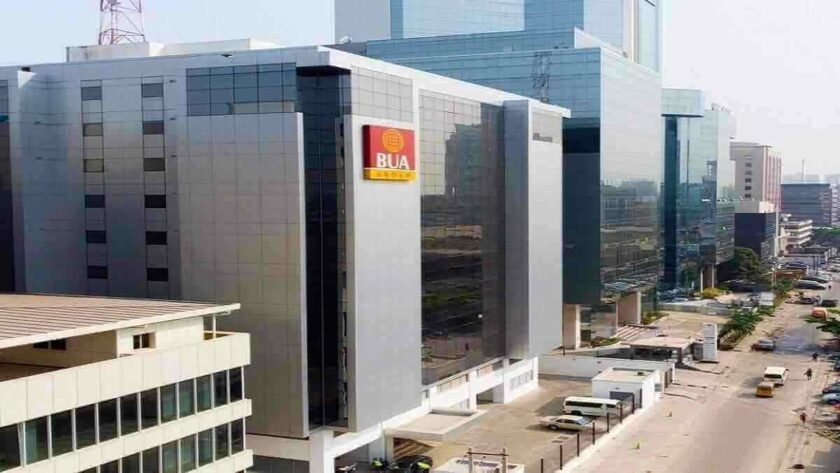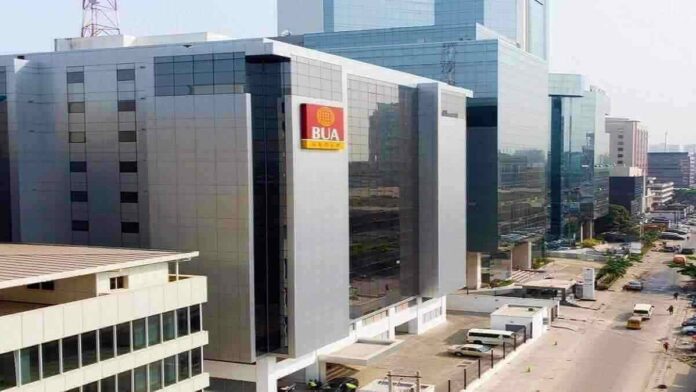BUA Cement Share Price Bursts Through Analysts Forecast for 2020
BUA Cement Plc stock price closed Friday at ₦41.75, a neck-deep with Meristem Securities projection of ₦42.03 December 2020 price target.
With the new bull market, it is not impossible for BUA stock to go vertical on sustain improvement in market sentiment.
Notably, the recent policy rate cut supports the newly formed bullish trend in the equities segment of the market.
Obviously, the rate cut caught even investment banking Nostradamus unaware, except few who have slight premonition but then 100 basis point cut was a big deal.
Listed on the Nigerian Stock Exchange’s main board, BUA Plc market capitalisation printed at ₦1.413 trillion on 33,864,354,060 shares outstanding.
Meanwhile, a slew of equity analysts has been overtly bullish on BUA, the third force in the cement industry after its successful combination deal.

As a member of the cement oligarchy, BUA has been noted to have disrupted possible price adjustment by its competitors.
In the first half of 2020, BUA cement reported a surge in topline despite COVID-19 induced economic lockdown across the global economies.
BUA Cement Plc performed impressively, delivered a topline growth of 12.69%, from ₦89.86 billion in the first half of 2019 to ₦101.26 billion.
Meristem Securities Limited stated that during the period, the company made significant strides in its market deepening efforts.
Its guerrilla marketing efforts saw sales volume increased 7.93% to 2,463 Kilotons compare to 2,282Kilotons in H1:2019.
The group was able to achieve this sterling sales feat despite an economy set on edge by the COVID-19 pandemic.
Analysts however explained that unlike its peers (who recorded revenue declines in Q2:2020), the cement maker recorded a 1.21% turnover growth in Q2:2020.
This happened as the company’s major market (Northern Nigeria) was largely free of the lockdown measures which hindered construction activities elsewhere.
“We had expected largely weak construction activities, a prolonged period of lockdown in the commercial hubs and a generally weak economic environment to have a deep impact on turnover.
“However, given the benign effect of the pandemic on performance, we have reassessed the impact of COVID-19 risks to topline growth”, Meristem stated.
Meanwhile, analysts at the firm said they see further approval of exports quotas (the company received approval for limited exports via land borders in H1:2020) and an unrelenting drive into new markets as key tailwinds.
Meristem then forecasted revenue growth of 20.59%, implied capacity utilization of about 64% to ₦211.65 billion (from the previous estimate of ₦148.57 billion), from ₦175.52 billion in 2019.
BUA’s Energy Costs Rises on Account of FX Devaluation:
During the period, analysts noted that higher costs were triggered by the Naira devaluation, from ₦305 to ₦379 at the official window.
The company’s energy costs rose sharply by 17.97% as gas prices and costs of imported fuel options (LPFO and coal) increased in response to the devaluation.
This impacted the company’s cost to sales ratio, which rose to 53.84% in H1:2020 compare to 50.71% in H1:2019 with total direct costs growing by 19.64%.
However, Meristem explained that BUA is making efforts at costs optimization, one of which is the reconfiguration of the Sokoto plant to run on gas.
The plan was to run Low Pour Fuel Oil (LPFO). To further pressure margins, the expansion into new markets raised operating expenses higher by +15.02%.
These activities driven overheads dragged the company’s operating margin lower to 40.30% from 42.44% in H1:2019.
Nonetheless, the group profit after tax climbed higher by 13.74% to ₦34.82 billion in the period as against ₦30.61 billion reported in the comparable period. This occurred on the back of a 30.4% decline in finance expenses.
Going forward, Meristem Securities maintained an expectation of an FX induced cost build-up, but a lower effective tax rate.
This comes from the benefit of the pioneer status on its plants, which is expected to ease the impact on the bottom line.
Related Party Liability: Shareholders’ Loan Triggers a Spike
As the company strives to deliver additional capacity by the first quarter of 2020, analysts hinted that it had relied mainly on funding from banks and shareholders’ loans.
Thus, related party liabilities surged by +1,974.05% to ₦19.06 billion, from ₦918.74 million in 2019.
Meristem Securities stated that while the company has secured an extended tenor on its borrowings, it still maintains low gearing with a debt to equity ratio of 0.07x.
Despite a largely equity-based capital structure, an annualised return on equity of 16.26% was recorded in H1:2020.
Meristem Securities however express concerns about cash earnings and liquidity going forward as trade receivables are seen to have risen sharply.
In the period, BUA Cement receivables rose by 93.87% from ₦2.62 billion in 2019 to ₦5.08 billion in H1:2020.
Equity analysts revise their expectations for the company’s topline performance based on a reassessment of the operating environment.
Meristem said given strong showings in Q2:2020, recovery in economic activities and further penetration into new markets, analysts expect impressive full-year revenue growth.
Thus, Meristem Securities upgrade projected earnings before interest, tax, depreciation and amortisation (EBITDA) by 34.09% to ₦81.85 billion.
This was against ₦61.04 billion previously estimated and an enterprise value (EV) per EBITDA of 17.23x for 2020.
Having adjusted for a negative net debt of ₦12.99 billion, analysts said they arrived at a revised 2020 target price of ₦42.03.
Analysts at Cardinalstone Partners stated that as BUA emerged in the oligopolistic cement sector through a well-designed acquisition and combination, its extra capacity added pressure to existing competition.
In its industry review, Cardinalstone explained that BUA Group created the third-largest cement concern by capacity of about 8MTPA.
The company did this through the consolidation of Cement Company of Northern Nigeria (CCNN) with 2 million tonnes per annum (MTPA) and Obu Cement, Edo State with a total capacity valued at 6MTPA.
Analysts said BUA is building upon its historical brand capital which goes as far back as 1962 with CCNN, the combination cemented the company as the largest cement producer in the Northwest and a formidable force in the southern parts of the country.
Specifically, analysts recognised that CCNN overtook the 1MTPA Ashaka plant in Gombe, while the Obu plant offered competition to UNICEM and a few competitor plants in the South West.
However, the competition stepped up by the entry of BUACEMENT has seen companies extend price differentiation and distributor discounts across regions to retain market share.
In the first half of the year, the BUA CEMENT recorded a revenue per tonne of ₦41,113/MT that trailed those of WAPCO’s revenue per tonne of ₦44,316 and DANGCEM ₦44,855.
“This suggests that aggressive pricing may be part of its short-term strategy”, Cardinalstone explained.
Analysts stated that in addition to competing in the domestic market, BUACEMENT also plays alongside DANGCEM on the export front, leveraging the northern routes.
In June 2020, BUA exported about 20 trucks of cement to the Niger Republic while DANGCEM extended its export drive with a maiden shipment of 27.8KT of clinker to Senegal via the Apapa Export Terminal in the same month.
Read more: Yusuf Binji leads BUA Cement to emerge as third largest on NSE
BUA Cement Share Price Bursts Through Analysts Forecast for 2020












